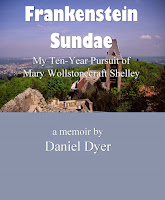And yet
another visitor—who was there at the same time as Trelawny—was Fanny Kemble, a
member of the celebrated acting family, the Kembles, who lit the London stages
for decades. Her father, Charles Kemble (brother to the talented performers John
Kemble and Sarah Siddons), was part-owner of the Theater Royal, Covent Garden,
and when Fanny was nineteen, he decided to “risk” casting her as Juliet in a
production of the Bard’s play in October 1829. Charles was having financial “issues.”
Fanny had not performed on the stage before—despite her family’s long history.
She was an
immediate hit—and crowd favorite. Among those seeing her were William Makepeace
Thackeray and Washington Irving. The latter was a family friend, and, according
to a 1982 biography of Kemble, She ran to
him with great excitement following a production when he called on the
Kembles to offer his congratulations.[1]
She remained a London stage favorite and soon was traveling around for assorted
reasons—performing, sight-seeing, working for social reform. (She was
virulently opposed to slavery.) This is not the place to dive into Kemble’s
remarkable life—but just to see what she had to say about Niagara Falls, a site
she was visiting, as I said, at the same time as Trelawny. Who’d claimed to have
swum the river below the Falls.
On August 1,
1832, Fanny and her family set sail for America, where they’d planned a performing
tour—a tour that was very successful for them. Fanny kept a journal of that
visit, and very near the end of it, she records her visit to the Falls. She and
her family had met Trelawny late in June 1833, on a steam-boat departing from
New York Harbor, heading up the Hudson River. Trelawny—no surprise (oh, did he
ever attach himself like a refrigerator magnet to sturdy (and sexy) notables,
wherever he found them!)—swopped in. Here’s what Fanny says in her journal that
day:
Mr. Trelawney [sic] came and stood by me for
a considerable time after we started. It is agreeable to talk to him, because he
has known and seen so much. He has traversed the world in every direction, and
been the friend of Byron and Shelley. … he is an uncommon man, and it is very
interesting to hear him talk of what he has seen, and those he has known.[2]



No comments:
Post a Comment